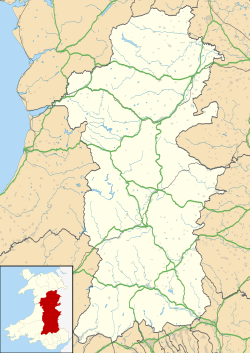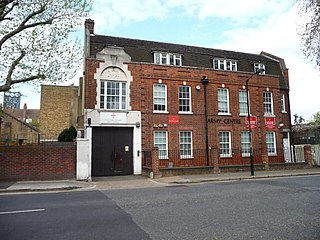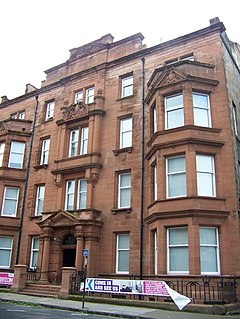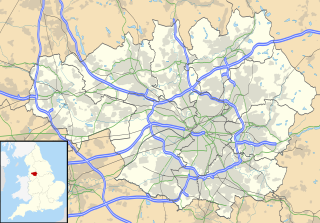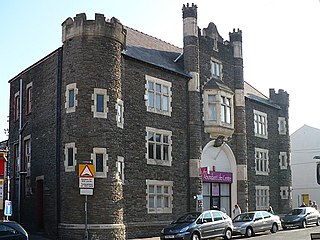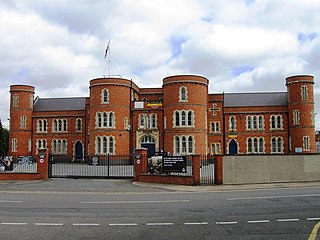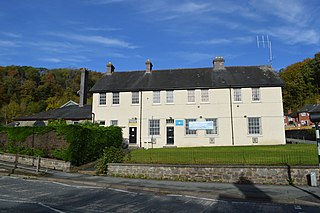| Back Lane drill hall | |
|---|---|
| Newtown, Powys | |
Back Lane drill hall (on the left) | |
| Coordinates | 52°30′59″N3°19′03″W / 52.51633°N 3.31763°W Coordinates: 52°30′59″N3°19′03″W / 52.51633°N 3.31763°W |
| Type | Drill hall |
| Site history | |
| Built | 1855 |
| Built for | War Office |
| In use | 1855 – 1955 |
The Back Lane drill hall is a former military installation in Newtown, Wales.

Newtown, the largest town in the county of Powys, Wales, lies on the River Severn in the community of Newtown and Llanllwchaiarn, within the historic boundaries of Montgomeryshire. It was designated a new town in 1967 and saw large population growth as firms settled, changing its market town character. Its 2001 population of 12,783 eased to 11,357 at the 2011 census. It is known as the birthplace of Robert Owen in 1771, whose house stood on the present site of the HSBC Bank. The town has a theatre, Theatr Hafren, and a public gallery, Oriel Davies, displaying contemporary arts and crafts.

Wales is a country that is part of the United Kingdom and the island of Great Britain. It is bordered by England to the east, the Irish Sea to the north and west, and the Bristol Channel to the south. It had a population in 2011 of 3,063,456 and has a total area of 20,779 km2 (8,023 sq mi). Wales has over 1,680 miles (2,700 km) of coastline and is largely mountainous, with its higher peaks in the north and central areas, including Snowdon, its highest summit. The country lies within the north temperate zone and has a changeable, maritime climate.

